When I was 12 and had just begun my birdwatching journey, I often found myself immersed in Dr. Salim Ali’s renowned book, A Pictorial Guide to the Birds of the Indian Subcontinent. I would spend hours flipping through the plates, searching for species that stood out. Owls, kingfishers, woodpeckers, parakeets, and raptors all fascinated me—but the illustrations that captured my imagination the most was the one featuring pheasants. Every bird in that page had its own aura. However, with their unique colours and large sizes, the Himalayan pheasants left me awestruck.
The Monal Chapter
Fast forward 14 years, and I could finally plan a trip to click these birds. Leading the list was my favorite—the Himalayan Monal, also known as the Impeyan pheasant. So the first trip that I planned was to Chopta, Uttarakhand. I would be travelling with my elder brother (Anirban Saha) on this trip, who was just as excited for what was to come.
Chopta is a picturesque village nestled in a lush valley, best known as the base camp for the famous Chandrashila trek. Upon arriving, we met our guide, Prabhat Bisht, whose warm demeanor and deep knowledge of the region immediately reassured us. He walked us through the plan for the coming days, and with eager anticipation, we set off for our very first location. This spot, affectionately known by locals as “Monal Point,” felt like something out of a painting. A small waterfall trickled down the mountain road, eventually weaving itself into a lively stream. The banks were framed by wildflowers and clusters of rhododendron trees, creating a natural garden that seemed almost too perfect to be real. Prabhat explained that as the sun dipped low, Monals often descended here in search of food before settling in for the night.
And then, it happened. A magnificent male Monal swooped gracefully down to the rocky riverside. As the golden rays of sunset touched its iridescent plumage, the bird shimmered like a living rainbow. I stood frozen, spellbound by its beauty.My camera hung uselessly in my hands as I simply stared, soaking in the moment I had waited so many years to witness. For a while, I could do nothing but marvel at the dazzling colors and elegant form of this magical bird. However, when it flew to another location, I realized that it was equally important for me to get some decent shots of this prized sighting.
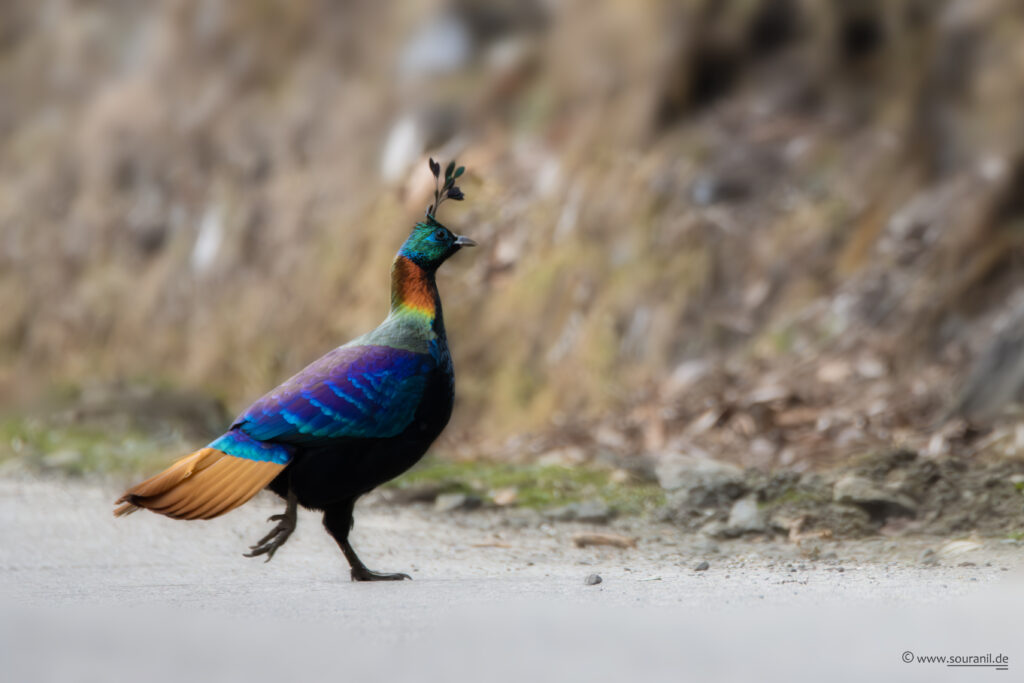
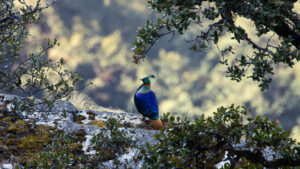
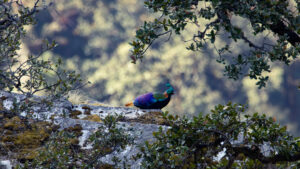
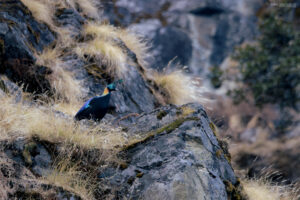
For the next few days, we tried birding in and around Chopta for other species and everything went quite well. Our only regret was that we could not complete the Chandrashila trek. We began the ascent with enthusiasm, but after just two kilometers the weather turned abruptly—first rain, and then heavy snow. Caught unprepared for such conditions, we had no choice but to turn back to Chopta. Yet, the mountains still offered us a gift. For a brief moment, in poor light and amidst the falling snow, we caught sight of a Himalayan Monal walking gracefully across the white landscape. Despite the challenging conditions, that fleeting glimpse was enough to feel like a dream fulfilled—one of the biggest ticks on my bucket list.
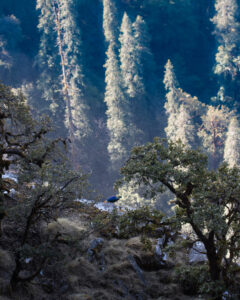
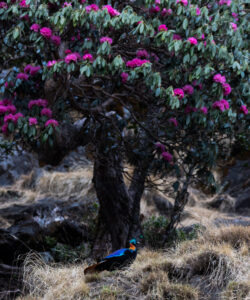
The Koklass Chapter
Spotting the Koklass near Chopta felt more like a side quest to our main pursuit of the Monal. Guided by Prabhat’s keen tracking skills, we ventured a few kilometers into a dense pine forest where he had located the bird. Unlike the majestic but relatively approachable Monal, the Koklass pheasant is elusive—quick, shy, and constantly on alert. Its loud calls echo through the forest, but getting a clear shot of this wary bird is anything but easy.
One morning, we decided to put a plan into action. We had noticed that a male Koklass was slowly making its way out of the dense forest toward a nearby grassland. This clearing, ringed by tall trees, looked like a living canvas of light and shadow. Our idea was simple: if we could slip into the darker edge of the grassland and conceal ourselves behind a tree, we might be able to photograph the pheasant without disturbing it.
The plan worked beautifully. For nearly two hours, we shared space with this notoriously elusive bird, all without revealing our presence. Each time the golden sunlight touched its plumage, the Koklass seemed to glow like an emerald set against the forest floor. We watched in awe as it carried on naturally—strolling through the grass, climbing onto rocks, and delivering its loud, resonant mating calls. By the end, we realized we had been given far more than we had hoped for.
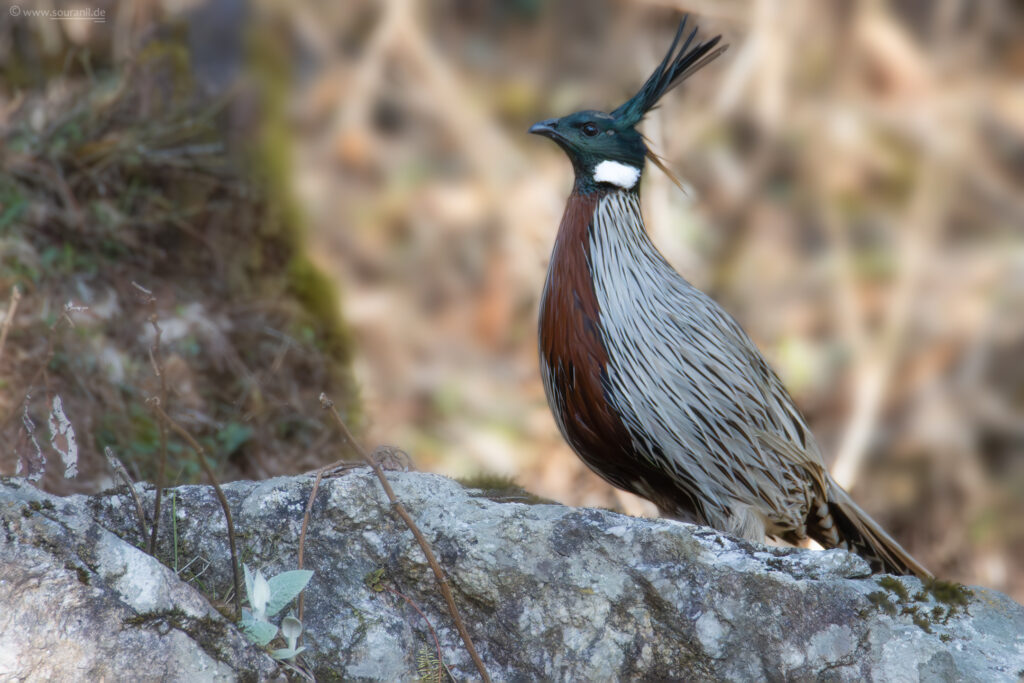
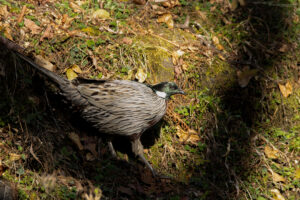
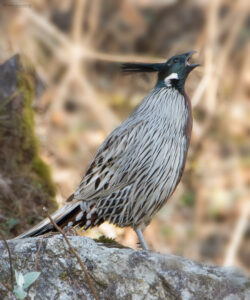
The Tragopan Chapter
In 2023, I visited Singalila National Park for the first time on a Red Panda expedition—and instantly fell in love with the forest. I had never experienced such a riot of colors in nature before. While the trip was a success from a Red Panda perspective, I left with a lingering wish: to return in spring, the perfect season to search for the elusive Satyr Tragopan.
That chance finally came in March 2025. This time, I set out once again for Singalila, with the Satyr Tragopan as my goal. I also decided to trek all the way to Sandakphu, not just for the birds but to witness the forest at its most magical—when the rhododendrons burst into bloom, painting the hillsides in fiery reds. The best way to savor this transformation was to move slowly on foot, and along the way, I would keep my eyes and ears open for a glimpse of the Tragopan.
I did this trek with my close friend Rohit and our guide, Roshan bhaiya. We started from Dhotrey and reached Tumling on the second day. The next two days were dedicated to searching for the ruby of the forest—the Satyr Tragopan. As we set out, the landscape itself left us spellbound: hillsides ablaze with blooming rhododendrons and, in the distance, the majestic Kanchenjunga towering above it all. The sight alone felt rewarding enough. Yet, when it came to birding, fortune wasn’t on our side. Despite hours of searching, the first day passed without a single glimpse of the Tragopan.
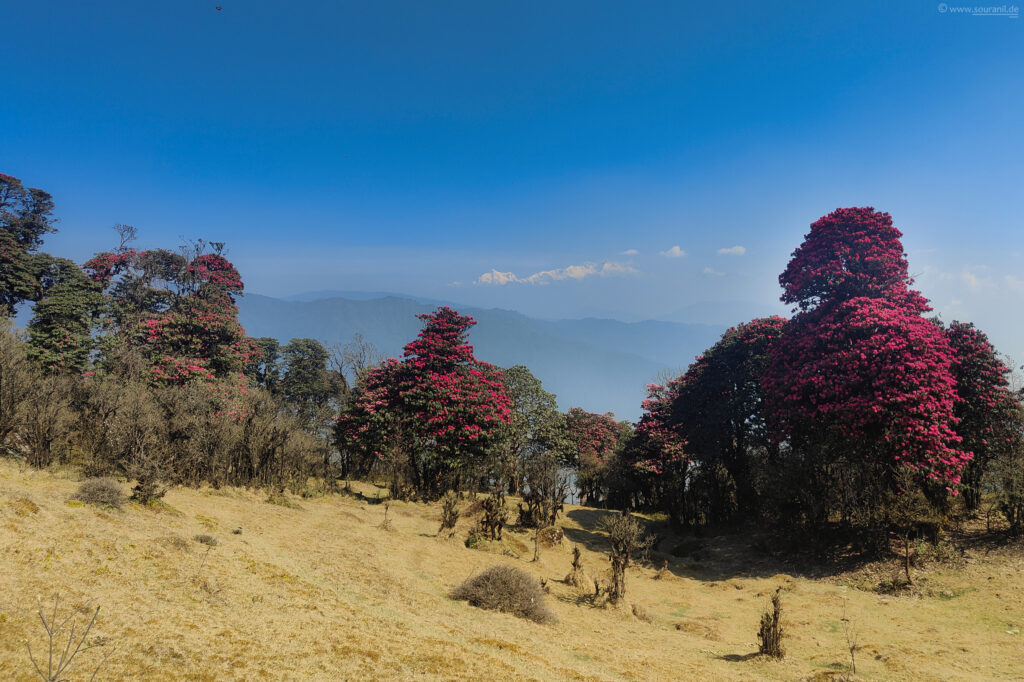
The next day, we chose a different trail, hoping for better luck. But it soon became clear that this quest was far more challenging than we had imagined. The bird we were after was, after all, one of the most elusive of them all. As the day wore on and our hopes began to fade, a distant call suddenly echoed through the forest—it was a Tragopan. The call came from far below us, deep in the bamboo thickets. Without hesitation, we began descending toward the sound.
After a while, we realized we had ended up at the same spot we had searched the previous day. By then, the call had stopped, leaving us disappointed once again. We waited in silence for a few minutes, but the forest offered no further signs. With daylight slipping away and the trek back to Tumling still ahead, we reluctantly decided to return.
And then, just as we rounded a mountain bend, we froze. There, at the edge of the road, stood a Satyr Tragopan—silent, still, as if waiting to reveal itself at the very last moment. The encounter lasted barely ten seconds, yet it filled us with an indescribable sense of relief and joy. In that brief but magical sighting, our trek had found its success.
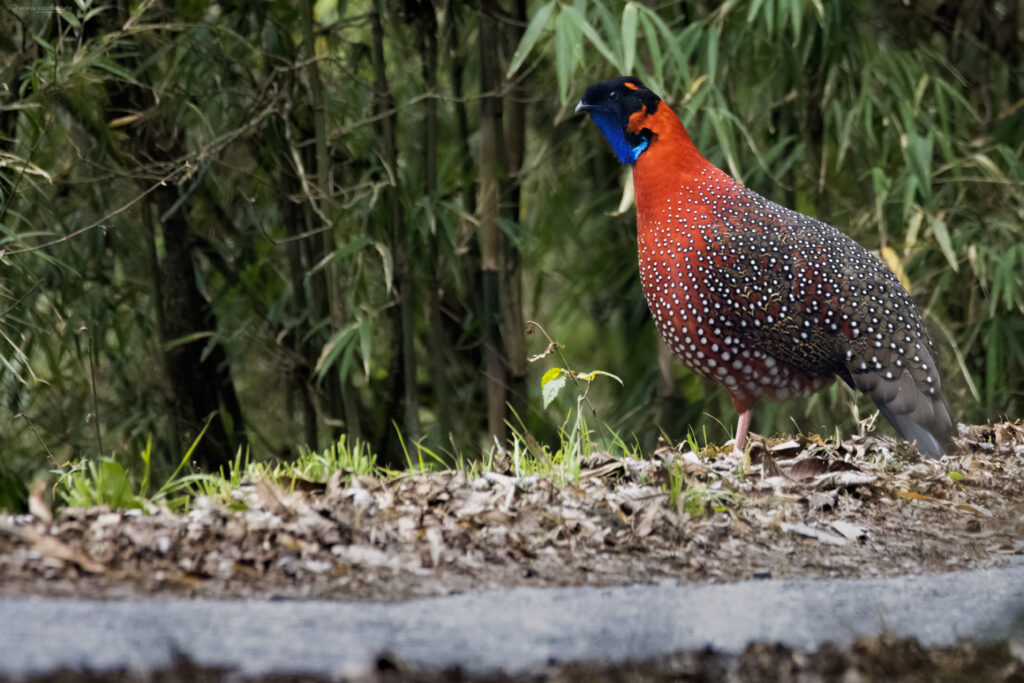
Bonus – The Blood Pheasant Chapter
After our most unexpected encounter with the Satyr Tragopan, we continued our ascent toward Sandakphu. On the final evening before reaching the summit, we heard thrilling news—there had been a sighting of the rare Blood Pheasant along the route.
But finding it would not be easy. That day’s trek stretched over 12 kilometers, and we needed to reach Sandakphu by dusk. Determined, we pushed our pace, hoping to save enough time for a brief search. By late afternoon, we arrived at the spot we had been told about: a dark pine forest just two kilometers short of Sandakphu. At 11,500 feet, we were walking through clouds, with visibility reduced to a pale, shifting mist.
The long climb had left us exhausted, and our steps had slowed. Roshan bhaiya however, was already well ahead of us on the trail. Suddenly, I saw him waving frantically, urging us to hurry. My heart skipped—he must have spotted something. Without a second thought, we dropped our bags and trekking poles and ran up the steep path. Breathless and drained, we reached him—and there they were: a pair of Blood Pheasants, sitting gracefully among the shadows.
The sprint had sapped nearly all our energy, and lifting our cameras felt like an effort in itself. We managed only a few record shots, nothing spectacular—but it hardly mattered. To witness a mating pair of such a rare bird, in that mystical forest at cloud level, was an experience far more valuable than any photograph.
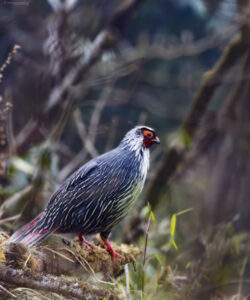
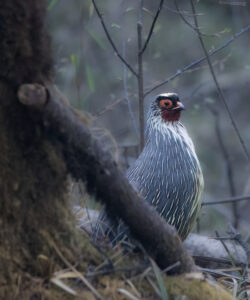
Future Plans
After such unforgettable encounters, I’m already looking forward to future journeys in search of the Grey Peacock-Pheasant, Temminck’s Tragopan, and Mrs. Hume’s Pheasant. With a bit of luck, those adventures will be just as thrilling and rewarding as the ones I’ve experienced so far.
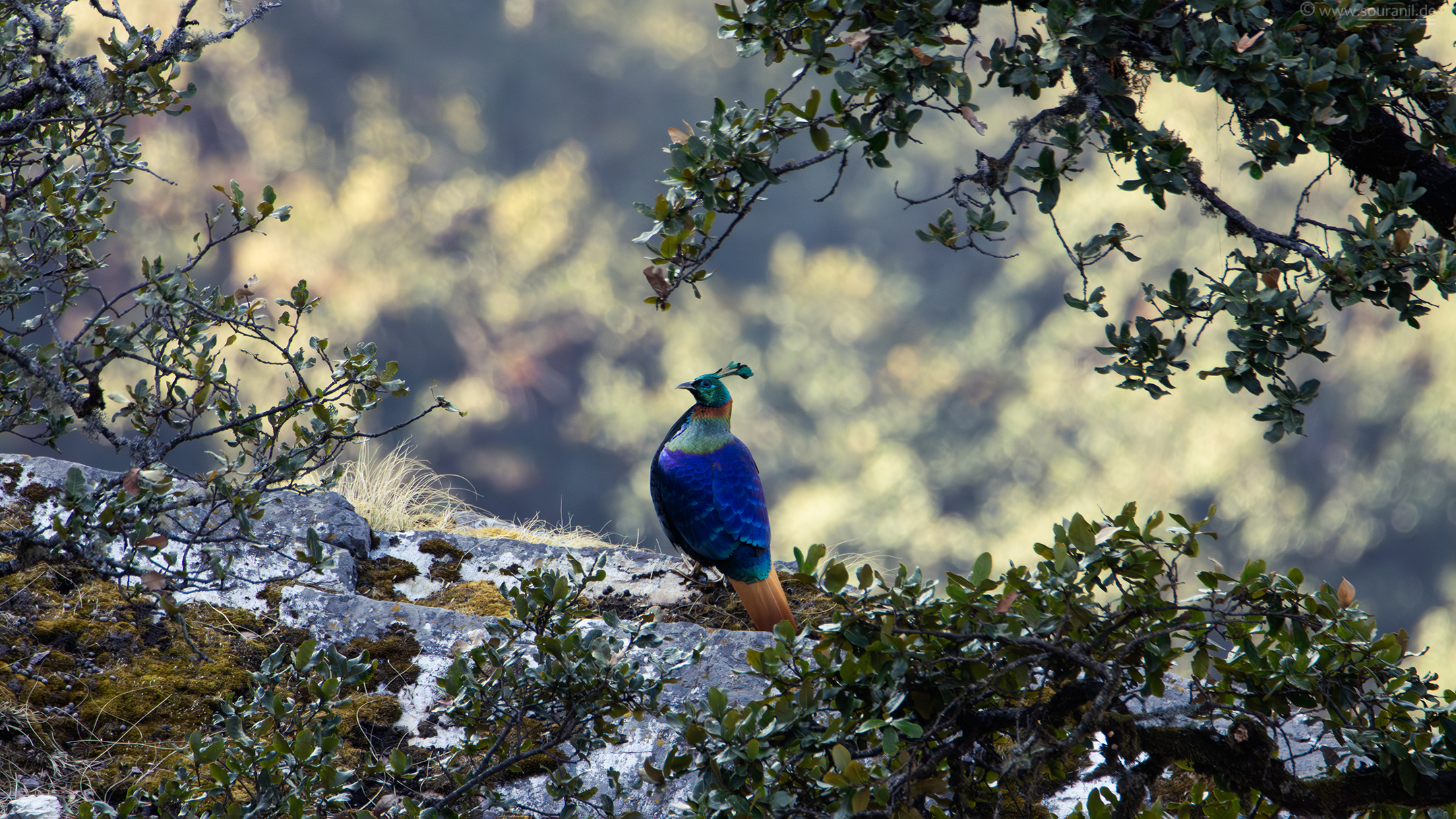
Leave a Reply